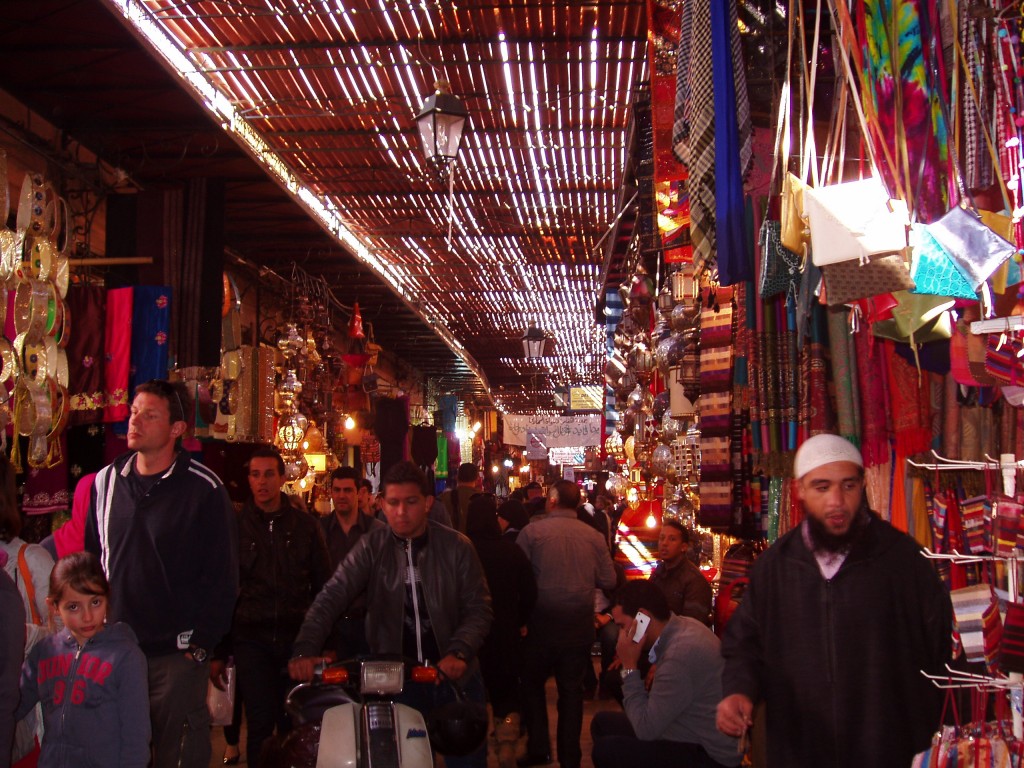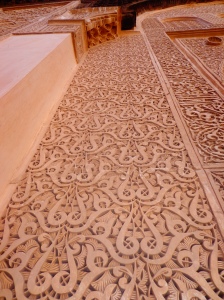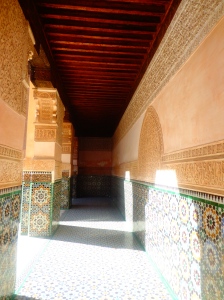Top 10 Places to Visit in Morocco
Top Destinations Travel Africa Morocco Marrakech FES
When you travel to Morocco the best places to visit include the imperial cities of Marrakech, Fes and Meknes. This is where you find wonderful bazaars, palaces and bustling town squares. Morocco is also famous for its beaches and some of the best seaside towns include Essaouira, Tangier and Asilah. Morocco also has natural beauty. You can hire a camel and trek through the Sahara; climb North Africa's highest peak; or stay in a traditional Kasbah in the fascinating Dades Valley.
1. Marrakech
Situated at the foot of the Atlas mountains, the imperial city of Marrakech is large, noisy, full of history, and beautiful. There's a lot to see and do in Marrakech. Highlights include the central square of Djemma el Fna; the Saadian Tombs, Marjorelle Gardens, and the souqs (bazaars). Staying in a traditional Riad will really enhance your visit to this fascinating city.
More information about Marrakech ....
2. Fes (Fez)
The most complete medieval city of the Arab world, Fes is a strange and appealing mix of middle ages meets the modern world. The extraordinary medina city of Fes El Bali is worth a few days walking in itself. Other highlights include the Merenid tombs, the Royal Palace and the Mellah (Jewish quarter). Fes was Morocco's capital for more than 400 years and is still considered the religious and cultural center of the country.
More travel information about Fes (Fez)...
3. Essaouira
A favorite with independent travellers, Essaouira is a great place to get away from the heat and bustle of the bigger cities. Jimi Hendrix and Bob Marley enjoyed the beach scene here in the 1960's. Highlights include strolling through the town's beautiful narrow streets filled with red and blue painted houses, the ramparts, the beach and listening to traditional music of the Gnawas.
More about Essaouira ....
4. Chefchaouen
Situated in the Rif mountains Chefchaouen is a small town in a big landscape. Popular with independent travellers (perhaps because it is the cannabis capital of morocco) but not yet spoilt by them. Highlights include hiking, swimming in streams, sipping a drink on the main square (Outa el Hammam) and enjoying the beauty of the white houses and their brightly painted doors.
More information about Chefchaouen ....
5. Merzouga
Merzouga is a desert town that lies a stone throw away from the impressive Erg Chebbi sand dunes, Morocco's largest dunes. From here you can organize camel treks into the desert and get a little taste of Bedouin life. The landscape around Merzouga evokes the classic images of the Sahara desert and won't disappoint. There are plenty of places to stay to suit all budgets.
More information about Merzouga ...
6. Jebel Toubkal - Trekking the High Atlas Mountains
Jebel Toubkal, situated in the High Atlas Mountains, is North Africa's highest peak at 4,167m (13,667 ft). It's a challenging trek to the summit, but worth it for the spectacular views. While you can make it to the summit and back to the town of Imlil in a day, it's recommended you take at least 3 days to get the most out of it.
7. Meknes
Getty Images/Petr Svarc
Meknes is smaller and a little more laid back than Marrakech and Fez yet this imperial city has similar charms. Highlights include a wonderfully preserved medina filled with souqs which is easy to navigate without a guide. The Imperial City, built by the powerful Moulay Ismail in the 17th Century, is a showcase of Moroccan architecture complete with huge gates and impressive carvings. The nearby Roman ruins of Volubilis are also well worth a trip.
More information about Meknes ....
8. Dades Valley
The Dades Valley runs in between the Jebel Sarhro and the High Atlas Mountains and offers some of Morocco's most spectacular scenery. The deep red cliffs on each side are lined with impressive Kasbahs, traditional Moroccan built forts. The best way to appreciate the valley and its Berber villages is to get out of your car and walk especially when you reach the Todra and Dades Gorges. Several Kasbahs in this region have been turned into hotels.
9. Tangier
Tangier is the gateway to Africa for many travelers. While the city doesn't have quite the charm it did in the 1940's and 1950's when you could rub shoulders with the likes of Truman Capote, Paul Bowles and Tennessee Williams there's still a lot to see. Highlights include the medina, the Kasbah and the Ville Nouvelle. Tangier is well known for its aggressive touts, but persevere and this unique city will grow on you.
More information about Tangier ...
10. Asilah
Asilah is a wonderful beach town on Morocco's North Atlantic coast. Asilah is very popular with Moroccan vacationers who flock to its sandy beaches in the summer months. The city walls are covered in colorful murals and the houses are white-washed making this town look like it could be at home in Greece. A popular cultural festival is held here every summer. Other highlights include the beaches, small shops, the ramparts and medina.


































